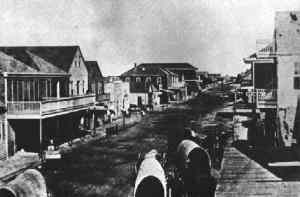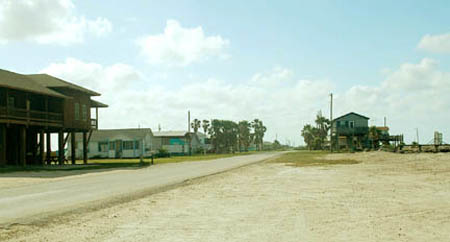Category 4 Hurricanes That Changed History. Miami 1926, Galveston 1900, Indianola 1886.. Where's Indianola you ask? Read on..
This post during a lull in the activity of the 2013 Hurricane Season is dedicated for the Weather Historians out there who always keep us focused on Hurricane History. One of those people is Bill Murray the Weather Historian...not the actor though they are both amazing people!
8/20/1886: Indianaola, TX (on Matagorda Bay) was devastated by a 925 mb #hurricane. Town was abandoned afterwards.
He is good. A lot of us are and we all have our own area of expertise. We all have libraries volumes deep with books on various shelves about different hurricanes and geographic locations.
https://twitter.com/wxhistorian
http://www.alabamawx.com/?page_id=36077
I know I do.
Truth is I always think on this infamous hurricane, it's one of my favorite ones to read about. Why you ask? Because when I first read about it all I could think was... "what if they hadn't rebuilt Miami after the 1926 Hurricane?" "Why was Miami rebuilt and not Indianola?"
To learn history you have to read, research and realize the similarities and the differences of each storm, the specific year and the individual town.

http://weather.unisys.com/hurricane/atlantic/1886/
Biography of a Category 4 storm in 1886 that hit land without the aid of recon and modeling and satellite imagery to be fully aware of the strength of the storm. Stray reports from Cuba and Key West yes...but really no way of knowing for sure how strong the story was becoming in the very hot waters of the Gulf of Mexico.
You want to know the value of every dollar spent on Hurricane Research and Recon? Try to imagine what it would have been like to wake up the morning before this Cat 4 storm and be totally clueless that your town would be so wrecked that it would never be able to be rebuilt.
Indianola, Texas was a beautiful little town on along the coast of Texas on Matagorda Bay. It had become the county seat and was a port of entry for many of the German Immigrants along the Texas coast during that time. Despite the loss of life and destruction of property the town was rebuilt.
I'm sure it was a beautiful place to live at the edge of the Bay. Many cities are built on the edge of such bays. Miami is one of them. The first time I read about Indianola a long time ago I thought of Miami rising up out of the water at the water's edge so vulnerable to hurricanes. In 1926 the young city of Miami was dealt a devastating blow by a Category 4 Hurricane and yet... Miami rebuilt and moved on. Indianola never did and it became an asterisk in history ever since. The answer to the trivia question "What was the name of the Texas town that was never rebuilt after a Category 4 storm in 1886?"
Indianola, Texas.
http://en.wikipedia.org/wiki/Indianola,_Texas

History of this beautiful ghost town.
Indianola, Texas today...

http://www.indianolatx.com/history.html
Today, you can do some great fishing there ....check it out.
http://www.indianolafishingmarina.com/
http://www.texasescapes.com/TexasGhostTowns/IndianolaTexas/IndianolaTx.htm
http://www.indianolafishingmarina.com/steel_blue_006.htm
You can visit this spot today as many fisherman do.....still beautiful, but never rebuilt the way other cities were...
Galveston rebuilt after the 1900 Hurricane, however it never regained it's importance as a financial center vs a tourist spot or a beautiful place to live if you wanted to take the chance that on any given September day you could lose everything you had....as it could all be blown away.
The truth is Galveston most likely would have regained it's importance had the Houston not gained the upper hand when they had the luck to just be opening the shipping channel inland. When the idea for the channel inland was first discussed it was considered a "folly" of sorts. Why would ANYONE want to take a shipping channel ... up the river when there was a perfectly good port of call on the water in the city of Galveston. And, then... Galveston was shut down for business as it struggled to rebuild and as they say timing is everything. One door shut, another one opened at the same time. The channel was built, opened and the commerce moved inland up the river and Galveston became that place you went to enjoy the beach if you dared to live near the water.

Note the track of the 1900 Galveston Hurricane... around the HUGE High that existed that year.

http://en.wikipedia.org/wiki/1900_Galveston_hurricane
In 1926 the strong Atlantic Ridge brought another Category 4 Hurricane that slammed into a young, bustling town. It was an unwelcome guest that crashed the boom time party that was already suffering from a severe drop in land sales during the Winter Season of of 1926.
First there was a lot of bad press in newspapers up north about the reality of the swamp land many people were buying site unseen, lot never seen... nothing ever built and banks became weary. There was a railroad strike making it hard to get in or out and then the larger than life steel hull schooner blocked the Bay.
On January 10, 1926 Prinz Valdemar a 241 foot schooner toppled over during a gale in a strong Cold Front and blocked the shipping channel at the height of the busy winter season. Note the picture below shows the old County Causeway from Miami Beach to Miami that later became the MacArthur Causeway.

And .....THEN CAME THE CATEGORY 4 HURRICANE that brought the final blow to the busy Boom days of Miami.

Miami Beach took the brunt of the storm surge which in some areas was estimated to be over 15 feet. People were swept away into the bay and never heard from again. This picture taken from Miami Beach where hotels on the waterfront were flattened and the furniture from the grand hotel was found at the bottom of the canals and Biscayne Bay for years after. Some bodies were never found.

And, yet.despite the loss of life and property and all the people who took advantage of the free tickets by the FEC to take the first northbound train out of Miami.... Miami rebuilt and became even more beautiful than it was before.

Some beautiful videos online of downtown Miami online. You should really look through them. And, understand that this city that I love that the natives love to call MYAMI could have easily been another ghost town had the people not rebuilt after the hurricane. As important as the investors of Miami's history are the larger unwritten history is of the people themselves. When the 1926 Hurricane hit Carl Fisher was off in Montauk building his new dream, he sent messages back to his team in Miami to have the workers "fix everything up" and so the workers did. The workers, the construction workers, the builders, the electric lineman all stayed in Miami after the Hurricane and rebuilt.
A strong high pushed the 1926 Great Miami Hurricane into Miami and it kept going through the Gulf of Mexico making a second landfall.

http://www.youtube.com/watch?v=U6wO-7Ws3Kk
I'm writing this article from the very beautiful City of Hollywood, Florida. A city greatly impacted by the 1926 Hurricane, however not destroyed. A good link below tells that story better than I can right now.
http://joanmickelsonphd.wordpress.com/2012/09/22/the-26-hurricane-refuting-the-myth-that-hollywood-was-destroyed-by-that-storm/
MY emphasis here is not so much why Miami was rebuilt and why Indianola was not.
My emphasis is for everyone to keep their eye on the High. It is a huge High and in years like this when the Saharan Dust Settles and energy builds up it has to be released sometime, somewhere. And, it will be released in the form of strong storms that will ride the perimeter of the ridge and where ever the ridge is set up when the Category 3 or Category 4 Hurricane is there is where the storm will make landfall. If everyone is LUCKY the ridge will pull back and the hurricane will recurve out to sea. If not... it will slam into some coastal town somewhere and that town will have advanced warning and be able to prepare for it better than the town folk in 1886 or 1900 or 1926.
That takes money... money for research, money for forecasters, money for gas to fly the planes. It takes money to launch better satellites and write better modeling programs and to pay the programmers to write the programs rather than other programs in private industry that pay better.
We need to better appreciate the value of the work of the people at the National Hurricane Center, Hurricane Research Division of AOML/NOAA and the National Weather Service. They need more money not less.
And, that is my bottom line today.
Remember the past. Learn from it. Prepare for the future and fund the research and work that is needed to keep us all safe during the Hurricane Season. Money comes and goes. Hurricanes are always here, every year and just because we choose to build along the coastline in the path of the storm that doesn't change where hurricanes go. And, as Hurricane Fran taught us in 1996 and Hurricane Floyd in 1999 taught us in the damage and loss of life and property goes far inland past the sexy beach shot that the media loves to take just prior to landfall.
So, picture yourself walking along the streets of this busy coastal town in the 1870s unaware that it will be hit twice in less than 20 years by devastating hurricanes that came at them out of the night with the fury and force of an atomic bomb.
Besos Bobbi
Ps... The 2013 Atlantic Hurricane Season so far... strong high, but weak storms. The storms will get stronger as we get into the heart of the Hurricane Season if CLIMO holds for this year. The path has been through or over the islands and affecting PR and moving through the Keys as remnant tropical lows or waves that never got a name. What if they did? What if in two weeks we are tracking a Category 4 Hurricane. With the current set up...where do you think it would go? Do you know? Lucky for you the NHC is on the job watching the models and worrying on every nuance in ever tropical wave or Invest. Appreciate them!

Today there is no hurricane out there... give it two weeks and there may be. Look at that huge high ridge pushing everything West. All it takes is for one Hurricane to stay alive, stay in the game and continue moving West.

Andrew did...first storm in late August. We are up to Tropical Depression 6 or the F storm...at the same point in the season.




0 Comments:
Post a Comment
<< Home